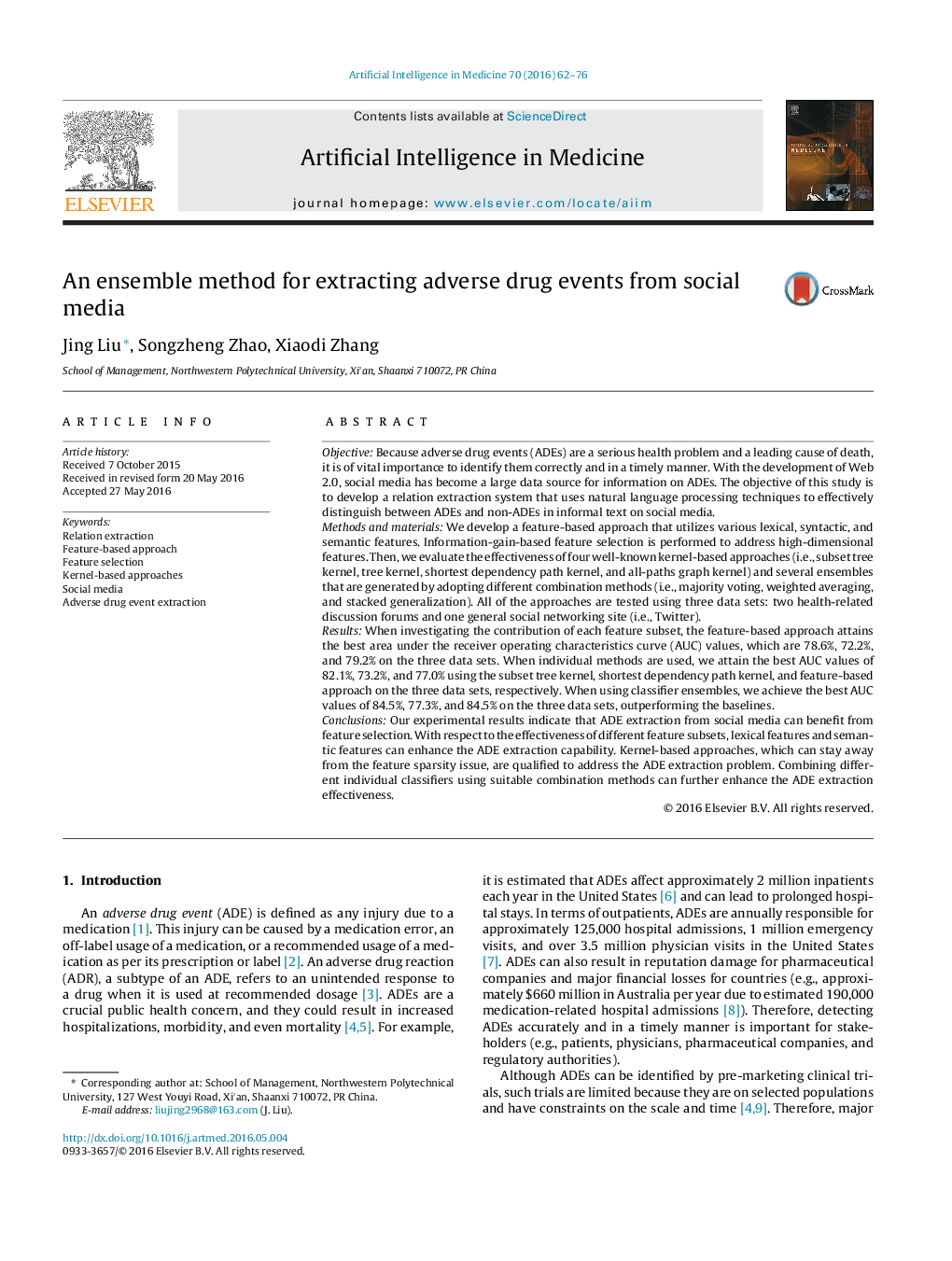| Article ID | Journal | Published Year | Pages | File Type |
|---|---|---|---|---|
| 377543 | Artificial Intelligence in Medicine | 2016 | 15 Pages |
•We propose a relation extraction system to distinguish between adverse drug events (ADEs) and non-ADEs on social media.•We develop a feature-based method, investigate the effectiveness of feature selection, and analyze the contributions of different features.•We investigate whether kernel-based methods can effectively extract ADEs from social media.•We propose several classifier ensembles to further enhance ADE extraction capabilities.
ObjectiveBecause adverse drug events (ADEs) are a serious health problem and a leading cause of death, it is of vital importance to identify them correctly and in a timely manner. With the development of Web 2.0, social media has become a large data source for information on ADEs. The objective of this study is to develop a relation extraction system that uses natural language processing techniques to effectively distinguish between ADEs and non-ADEs in informal text on social media.Methods and materialsWe develop a feature-based approach that utilizes various lexical, syntactic, and semantic features. Information-gain-based feature selection is performed to address high-dimensional features. Then, we evaluate the effectiveness of four well-known kernel-based approaches (i.e., subset tree kernel, tree kernel, shortest dependency path kernel, and all-paths graph kernel) and several ensembles that are generated by adopting different combination methods (i.e., majority voting, weighted averaging, and stacked generalization). All of the approaches are tested using three data sets: two health-related discussion forums and one general social networking site (i.e., Twitter).ResultsWhen investigating the contribution of each feature subset, the feature-based approach attains the best area under the receiver operating characteristics curve (AUC) values, which are 78.6%, 72.2%, and 79.2% on the three data sets. When individual methods are used, we attain the best AUC values of 82.1%, 73.2%, and 77.0% using the subset tree kernel, shortest dependency path kernel, and feature-based approach on the three data sets, respectively. When using classifier ensembles, we achieve the best AUC values of 84.5%, 77.3%, and 84.5% on the three data sets, outperforming the baselines.ConclusionsOur experimental results indicate that ADE extraction from social media can benefit from feature selection. With respect to the effectiveness of different feature subsets, lexical features and semantic features can enhance the ADE extraction capability. Kernel-based approaches, which can stay away from the feature sparsity issue, are qualified to address the ADE extraction problem. Combining different individual classifiers using suitable combination methods can further enhance the ADE extraction effectiveness.
